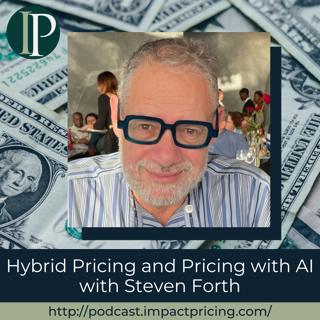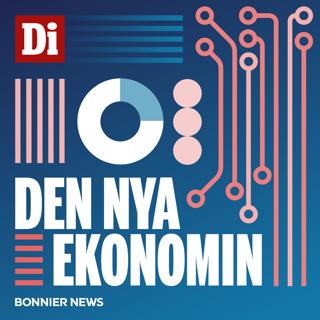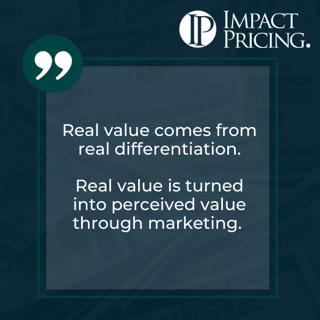
Memecast #42: Real Value Comes From Real Differentiation
Real value comes from real differentiation. Real value is turned into perceived value through marketing. When we're up against the competition, which most of the time we all. Our customers are buying perceived differentiation. They look at our product or competitors' products. What's the difference in price and is it worth it? And the, 'is it worth it' has everything to do with the difference in capability, the product differentiation, the features that are different. "Build real differentiation, but we have to make sure our customers know it." - Mark Stiving Now we may have built the best product in the world. We may have built a product that is much, much better than our competitors, but if our buyers don't know that. If they don't believe that, then they're not going to choose our product buyers. Aren't buying based on real differentiation? They're buying on their perceptions or what we'll call perceived differentiation. Our job as a company should be to build products that are truly better than our competitors. In other words, build real differentiation, but we have to make sure our customers know it. And that comes through marketing. It comes through sales efforts. We have to make sure we're communicating the fact that our product is better/different than our competitors. We hope you enjoyed this podcast. If you see have any questions or feedback please email me mark@impactpricing.com. Now go make an impact. Connect with Mark Stiving: Email: mark@impactpricing.com LinkedIn
26 Jan 20221min
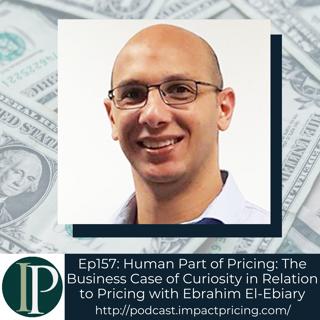
Human Part of Pricing: The Business Case of Curiosity in Relation to Pricing with Ebrahim El-Ebiary
Ebrahim El-Ebiary is a Pricing Manager at Goodyear Tires. He's been with Goodyear for six years now, having worked in Revenue Management at FedEx before that. Ebrahim is a Professional Certified Coach and he's genuinely interested in people and how they think. In this episode, Ebrahim talks about the importance of curiosity and good relationship to your pricing practice as you continue to make money through helping your customers do the same. Why you have to check out today's podcast: Learn about what revenue management is and the relationship it has with pricing Understand why it's important that pricing people understand their customers' future while having the customers take part in the creative process Find out about the benefits of having a good relationship with your customer and keeping that relationship until it lasts "Before launching a very detailed analysis, ask the question, 'how will this be used?'" – Ebrahim El-Ebiary Topics Covered: 01:11 – How Ebrahim got into pricing 01:59 – Revenue management's relationship with pricing and yield management 03:48 – Does Goodyear have revenue management? 04:40 – Defining a coach and what a coach does; Is Mark a coach? 06:05 – Pricing and coaching as different sides of the same coin 07:50 – Why curiosity is important in keeping relationships with customers 09:27 – Questions to ask in order to better understand a customer's future 11:53 – Why it's important for tires to be talking to each other 14:26 – Where the idea of communicating tires came from 15:42 – Having the customers take part in the creative process and keeping that relationship with them 19:08 – Being in a zero-sum game situation of price negotiation 23:12 – Expressing complex analysis into simple statements to not lose your customers 26:32 – Pricing advice for today's listeners Key Takeaways: "A coach is someone that supports people getting from where they are to where they want to get to, not where he or she wants to get, where they want to get to. A coach does not tell you or does not impose their point of view." – Ebrahim El-Ebiary "Making money is "the easy part" of it (doing business). Having the story and the vision, now that's where moneys truly made in a sustainable manner." – Ebrahim El-Ebiary "Discovering the future comes from asking about the legacy that they want to build mixed with free flow working sessions where we pick on each other's ideas jointly." – Ebrahim El-Ebiary "One thing remains at the heart of business is people. Once we lock in that relationship of trust and joint creativity, then we come back to do business together. That relationship then grows and flourishes, and with that, profits grow and creativity grows and the demand for new products that didn't exist or new services from existing products come to life." – Ebrahim El-Ebiary "Know the question you're trying to answer before jumping into a detailed analysis or investing in a pricing system software, hiring more people. Just know what question you're answering." – Ebrahim El-Ebiary People / Resources Mentioned: Goodyear Tires: http://www.goodyear.com/ Connect with Ebrahim El-Ebiary: LinkedIn: https://www.linkedin.com/in/ebrahim-elebiary/ Email: ebiary@gmail.com Connect with Mark Stiving: LinkedIn: https://www.linkedin.com/in/stiving/ Email: mark@impactpricing.com
24 Jan 202228min

Blogcast #38: The Best Attitude for a Great Value Conversation
This is an Impact Pricing Blog published on December 15, 2021, turned into an audio podcast so you can listen on the go. Read Full Article Here: https://impactpricing.com/blog/the-best-attitude-for-a-great-value-conversation/ If you have any feedback, definitely send it. You can reach us at mark@impactpricing.com. Now, go make an impact. Connect with Mark Stiving: Email: mark@impactpricing.com LinkedIn
21 Jan 20222min
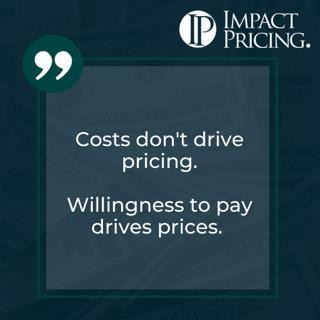
Memecast #41: Costs Don't Drive Pricing
Costs don't drive pricing, willingness to pay drives prices. I remember 1989. Yes. I'm that old? I was selling automatic test equipment to the semiconductor industry, and I heard this story on the radio that changed the way. I thought about pricing and costs forever. Intel built the 46 DX, which is the very first dual-core microprocessor in the world. Very expensive. Of course, AMD decided they were going to create a single core version and they charged a much lower price. So they've taken a lot of business away from it. Yeah. Intel's thinking 'Hey, we better do something'. So Intel creates a single-core version of their microprocessor and they charge a price more competitive with AMD. And so now they're not losing quite as much business. Now, this story makes all the sense in the world until you learn how Intel made the SX. They first made a DX, a dual-core processor, and then they took an extra manufacturing step with a laser to disable the coprocessor. It actually costs them more to build an SX, a single-core version than it did to build the dual-core version. And yet they sold it at a much lower price. Well, how does that possibly make sense? It makes sense because. Our costs. Aren't what drives our customer's willingness to pay? It's the value to the customer that drives their willingness to pay. We should stop overemphasizing our costs, especially when we're trying to set pricing. It's really about customer value. We hope you enjoyed this podcast. If you see have any questions or feedback please email me mark@impactpricing.com. Now go make an impact. Connect with Mark Stiving: Email: mark@impactpricing.com LinkedIn
19 Jan 20222min
